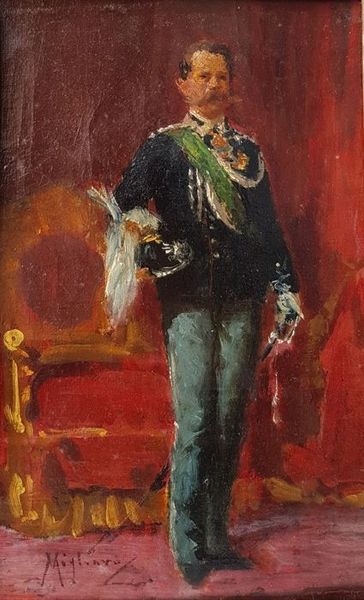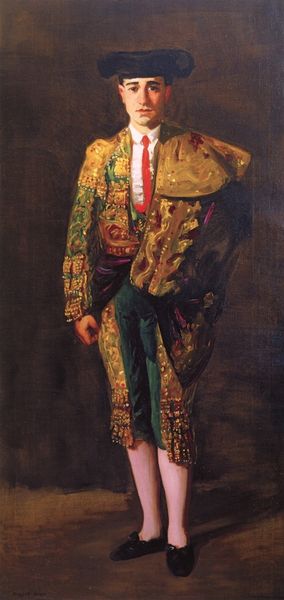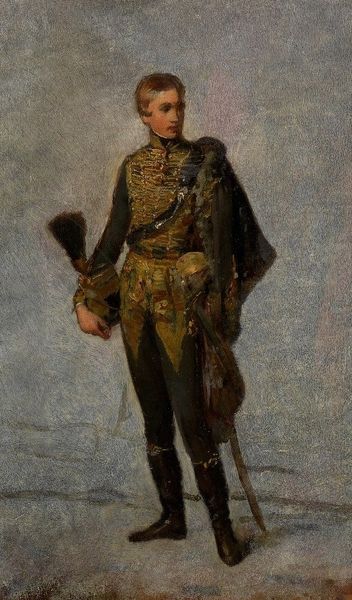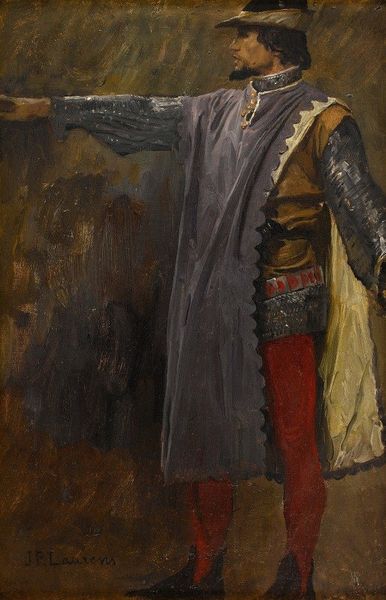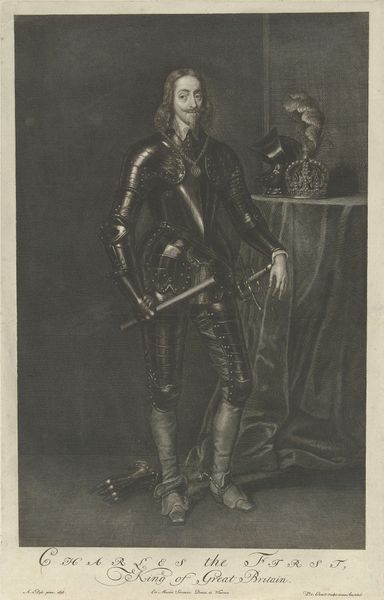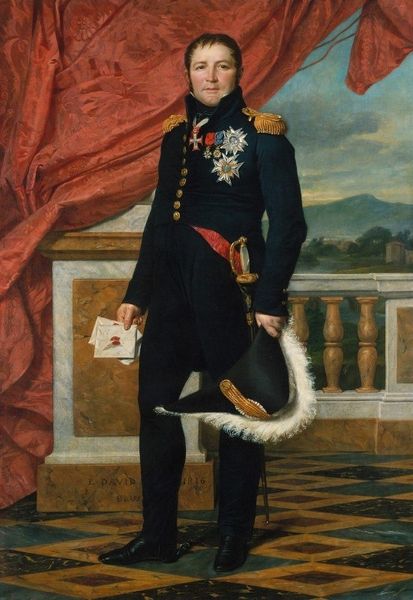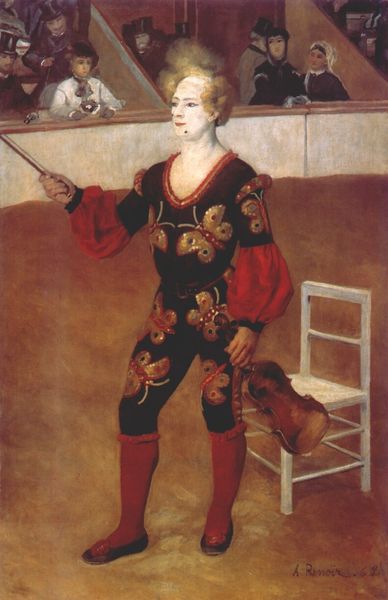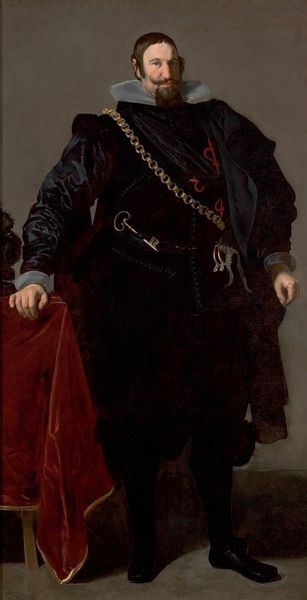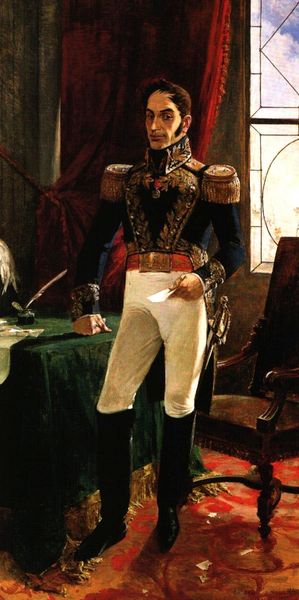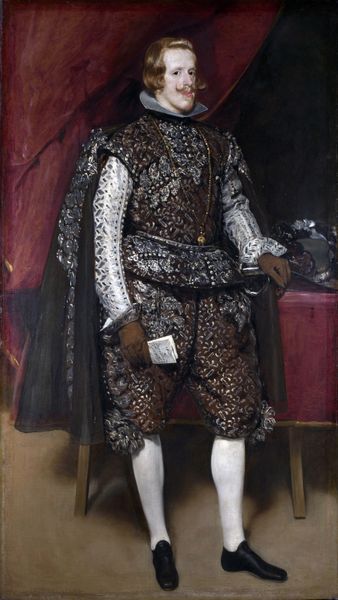
Dimensions: support: 1018 x 643 mm frame: 1238 x 856 x 72 mm
Copyright: CC-BY-NC-ND 4.0 DEED, Photo: Tate
Editor: Mabel Nicholson's "The Harlequin" is striking. The figure’s melancholic gaze clashes with the bright costume. How should we interpret those contrasting elements? Curator: The Harlequin figure is potent. The diamond pattern, for instance, has been linked to trickery, agility, but also to poverty and social marginalization across many cultures. Does the figure's sadness challenge or reinforce those historical associations for you? Editor: It definitely complicates them! He seems burdened by the costume, not empowered. Curator: Exactly! Nicholson seems to be exploring the psychological weight of performance, the mask we wear, and what lies beneath the surface. Editor: So it's less about the Harlequin as a type, and more about the individual trapped within the role? Curator: Precisely. The painting invites us to consider how archetypes shape, and perhaps confine, our own identities. That is what I am taking away from this work. Editor: That tension between archetype and individual really shifts my understanding of the painting. Thanks!
Comments
tate 6 months ago
⋮
http://www.tate.org.uk/art/artworks/nicholson-the-harlequin-t03464
Join the conversation
Join millions of artists and users on Artera today and experience the ultimate creative platform.
tate 6 months ago
⋮
William Nicholson and Mabel Pryde painted several portraits of their four children. Here, Annie Mary ’Nancy’ Nicholson (1899–1977) is eleven years old. There is no sentimentality about the scene and a theatrical effect is created by the dark interior and the harlequin outfit, one of several costumes kept in the family dressing-up box. Mabel Nicholson died in the influenza epidemic in 1918. Nancy became an artist too, and in the same year married the writer Robert Graves. Gallery label, February 2016
